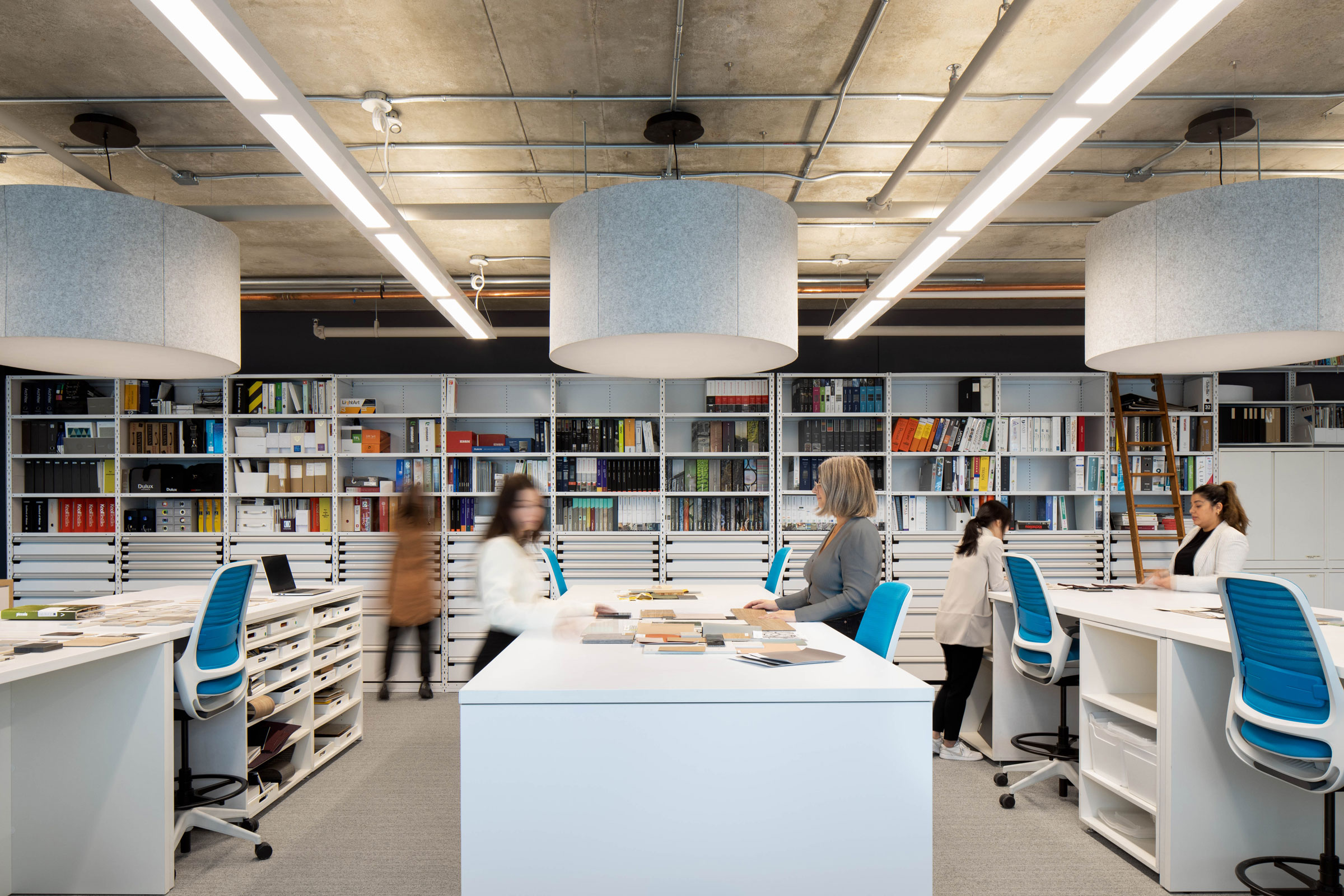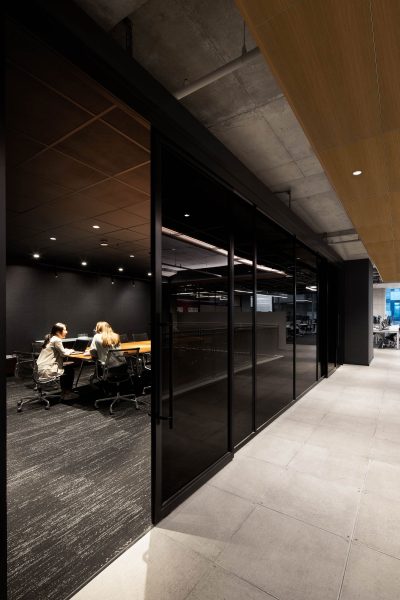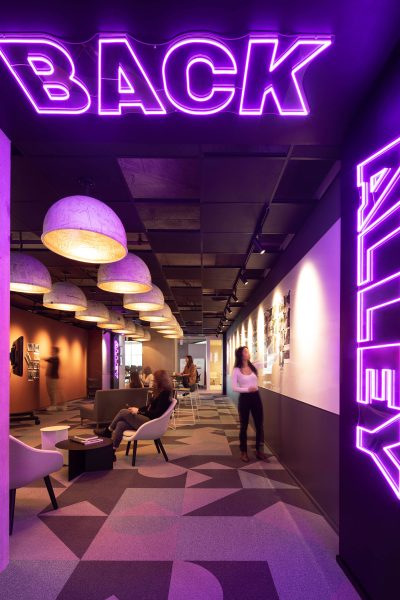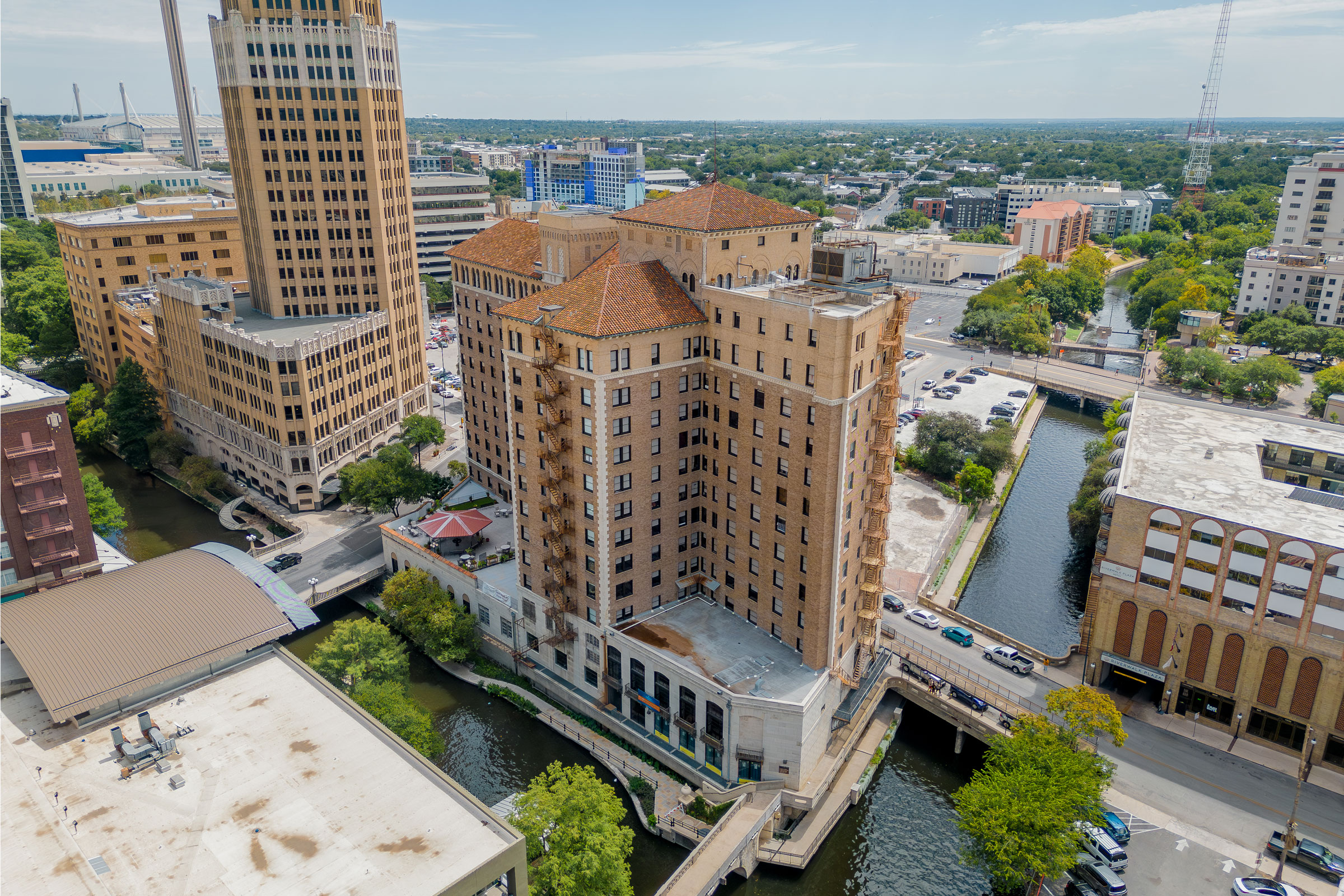Story at a glance:
- In 2025 BDP Quadrangle became the first architecture practice in Canada to achieve WELL v2 Platinum—a milestone shaped by hundreds of small, intentional choices, each tested and validated through a rigorous, people-centric lens.
- The architecture firm designed the studio to be resilient and adaptable, while supporting hybrid working and promoting wellness.
BDP Quadrangle’s studio at The Well in downtown Toronto is more than a place to work; it’s a living laboratory for wellness-centric, low-carbon design.
In spring 2025 the studio achieved WELL Platinum Certification from the International WELL Building Institute, becoming the first architecture workplace in Canada to earn this distinction and one of only nine Platinum-certified projects nationwide.
This project began with a fundamental question: What should a workplace be in a post-pandemic world? As both client and designer, BDP Quadrangle seized the opportunity to align culture, sustainability, and well-being within a single, cohesive space. The result is a resilient and adaptable studio, purposefully designed to support hybrid work, foster collaboration, and promote wellness.
From Vision to Verification
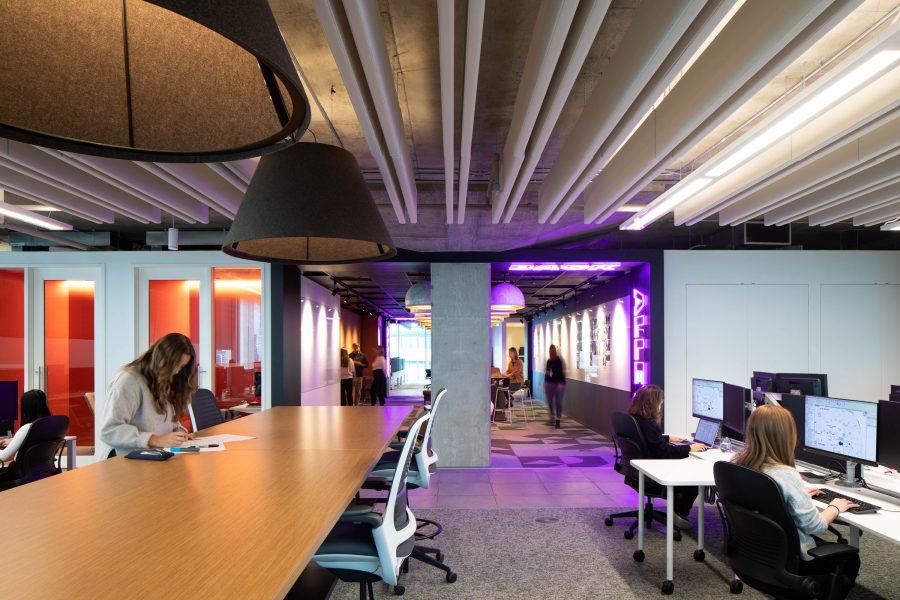
The BDP Quadrangle studio was conceived as a living lab—a space designed to adapt to changing needs while serving as a model for sustainable design. Photo by Adrien Williams
The story of BDP Quadrangle’s WELL Platinum journey starts long before certification day. It was initiated during project kickoff meetings, in early conversations about wellness, culture and how space can support the evolving nature of work. Leadership asked: Could our studio embody the values of health, inclusion, and low-carbon design, not only in its design, but in its daily operations?
That commitment guided the team to pursue the WELL v2 Performance Rating—a decision made with clear intent. Achieving certification demanded more than design drawings and policies; it required tangible proof and third-party verified, measurable outcomes across 10 categories of health and performance.
From the outset WELL Certification served as both compass and accountability tool. Teams spanning architecture, interior design, engineering, operations, and human resources collaborated to ensure every element—from flooring adhesives to fruit bowls—contributed to a broader ecosystem of health and sustainability.
The process began with identifying all WELL preconditions—mandatory requirements like minimum standards for air and water quality, acoustic privacy, and ergonomic furnishings. After mapping and integrating the mandatory preconditions into the design and construction documents, the team turned to optional optimization features to aim for the highest tier of certification. Internal dry runs and pre-testing identified areas for improvement: humidity levels in some zones were initially too low, prompting ventilation adjustment; switching to low-VOC cleaning products ensured compliance with air quality standards; and sound zones were redesigned for better acoustic dampening.
The next step was performance verification, conducted through third-party consultants equipped with testing kits and meters. Moving from room to room they measured light levels, thermal gradients, air pollutants, water flow rates, and reverberation. In one meeting room the team discovered a diffuser required rebalancing to meet thermal comfort scores—a quick adjustment resolved the issue and highlighted the importance of post-occupancy tuning.
Certification was never just about earning a plaque on the wall; it signaled a shift to a new operating model. Quarterly check-ins, occupant surveys, and ongoing environmental monitoring continue today. WELL provided a framework, shared language, and feedback loop that still guide day-to-day decisions.
Why We Moved
- The “Black Box” inside the BDP Quadrangle studio opened in 2025. Photo by Adrien Williams
- The “Back Alley” inside the BDP Quadrangle studio opened in 2025. Photo by Adrien Williams
The vision for BDP Quadrangle’s new studio emerged as the lease on its previous office was nearing its end date. That space was fragmented. Teams were spread across three disconnected floors, limiting spontaneous collaboration and a shared studio culture. Around the same time, in 2019, the firm joined global design practice BDP, bringing expanded networks and the need to support hybrid workflows across time zones.
Recognizing that both local and global ways of working were evolving, the team saw an urgent need to realign its physical space with a new operational model—one that could support hybrid collaboration, international coordination, and emerging design practices.
The firm secured two floors in The Well, a new landmark mixed-use development in downtown Toronto. With the base building targeting LEED Platinum, it offered a strong foundation for sustainability. Early access to the design and construction phase enabled the team to embed wellness and performance strategies from the outset—including creating an opening in the floor between the two floors to foster connection and visibility across the studio.
A Studio for a New Era
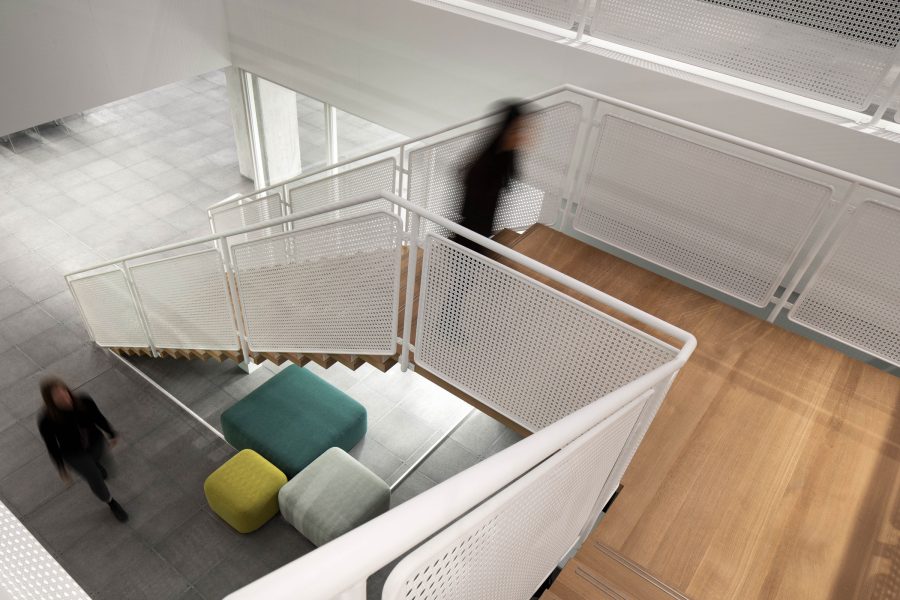
A feature staircase inside the new BDP Quadrangle studio connects the two floors, encouraging movement and enhancing visibility. Photo by Adrien Williams
The new studio was conceived as a living lab—a space designed to adapt to changing needs while serving as a model for sustainable design. It needed to go beyond functionality to foster connection, creativity, and continuous learning. This philosophy informed every element, from open collaboration zones to retreat rooms.
There are no assigned desks. Instead, the studio is organized into workplace neighborhoods, or flexible zones that support focused tasks, collaboration, virtual meetings, and restorative breaks. A feature staircase connects the two floors, encouraging movement and enhancing visibility. To support hybrid work the studio incorporates smart meeting rooms, touchdown spaces, and adaptable technology throughout.
In parallel with the architectural vision, technological integration was a key to the design. Occupancy sensors, environmental data loggers, and digital infrastructure enable real-time performance feedback and adaptability. Wireless room booking, adjustable lighting controls, and dynamic acoustic and climate controls allow the space to respond to diverse needs throughout the day.
Our Guiding Principles
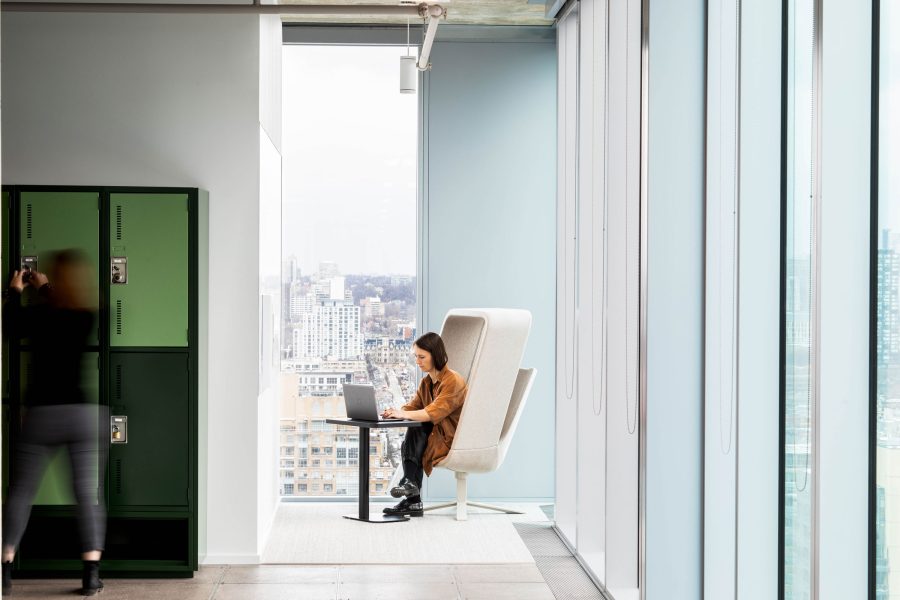
Flexibility, inclusivity, sustainability, and innovation were the BDP Quadrangle project’s guiding pillars. Photo by Adrien Williams
Six core themes guided every design and operational decision.
Wellness
People-centered design placed well-being at the heart of the studio. Workplace neighborhoods offer flexible, curated environments that support a range of work styles and moods, promoting autonomy, comfort, and engagement.
Sustainability
Low-carbon, circular design principles were embedded throughout the project, from design through construction and operations. Strategies included material upcycling and Red List-compliant materials reviews for the selection of finishes with every material chosen not just for performance, but for its environmental story. A full carbon life cycle assessment informed the design, enabling the team to pursue ambitious embodied carbon reduction targets.
Inclusivity
The studio is both physically inclusive and digitally accessible. Features like universal washrooms, height-adjustable desks, and intuitive wayfinding ensure everyone can navigate, participate, and thrive within the space.
Innovation
As a living lab the studio actively tests wellness and sustainability strategies in real time. The WELL certification provided the framework for this approach, shaping decisions in design, operations, and beyond.
Agility
Designed for long-term resilience, the space accommodates hybrid work, flexible team structures, and future shifts in design practice. Its layout, infrastructure, and amenities are all designed to adapt and endure for decades ahead.
Performance
The studio is built on measurable outcomes—tracking air quality, energy use, thermal comfort, acoustics, and employee feedback. This data-driven approach supports continuous improvement and long-term operational excellence.
Why WELL?
Among the certification frameworks considered, WELL stood out for its comprehensive alignment with the team’s priorities. It bridged architectural design with workplace policy, team culture, and the day-to-day user experience. More than a benchmark, WELL became a roadmap, guiding both the design and operation of the studio with clear intent.
WELL, v2’s 10 concepts—Air, Water, Nourishment, Light, Movement, Thermal Comfort, Sound, Materials, Mind, and Community—shaped every phase of the project, from early planning through occupancy. The result achieved WELL Platinum certification, exceeding the threshold by 11 points. The rigorous testing and documentation process reinforced the studio’s commitment to transparency, wellness, and long-term performance and value.
How the WELL Concepts Came to Life
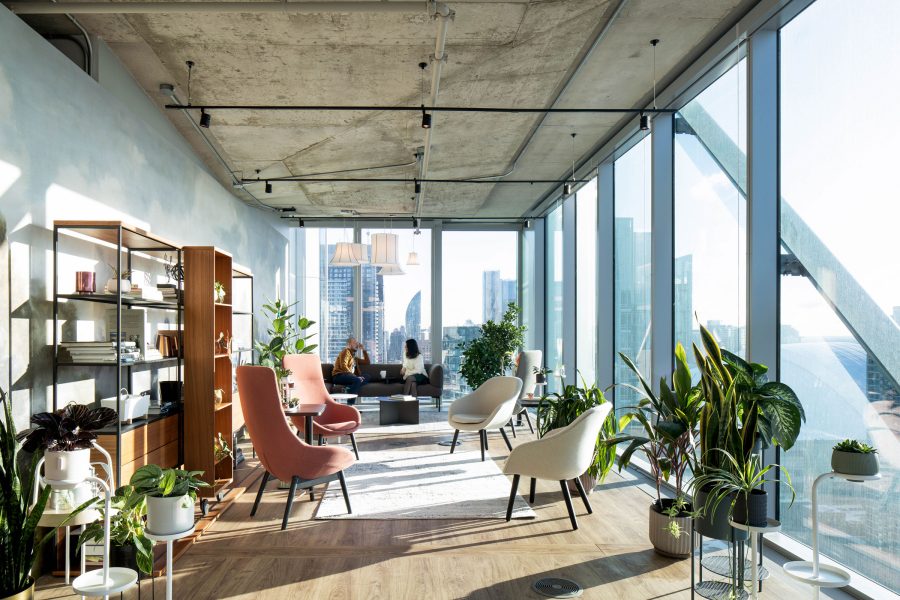
The BDP Quadrangle studio integrates biophilic design, hybrid work strategies, and continuous performance monitoring. The Oasis, seen here, combines biophilic elements, calming finishes, and indoor plants to support mental health. Photo by Adrien Williams
Air
Indoor air quality is monitored via strategically placed sensors tracking multiple parameters like CO₂, VOCs, PM2.5, temperature, and humidity. A real-time dashboard helps staff stay informed and engaged in maintaining a healthy environment.
Water
Touchless fixtures and filtered drinking stations promote hygiene and hydration. Reclaimed rainwater is used for toilet flushing. Plumbing fixtures exceed baseline efficiency standards.
Nourishment
Open kitchens and dining spaces on each floor support healthy eating habits. Fresh fruit and healthy snacks are available. A large communal space encourages social connection at mealtime.
Light
Floor-to-ceiling windows maximize daylight, reducing dependence on artificial lighting. Manual shading controls minimize glare. Electric lighting includes high-CRI fixtures, tuned to support focus and comfort.
Movement
The open stair connecting two levels promotes daily activity. Sit-stand desks, breakout spaces, and walkable layouts encourage mobility. The site offers strong transit, cycling, and pedestrian access.
Thermal Comfort
A raised access floor system allows individually adjustable air delivery at the zone level. Post-occupancy surveys help fine-tune comfort settings and seasonal adaptations.
Sound
Sound zones separate active collaboration from quiet areas. Acoustic wall panels and ceiling baffles, resilient flooring, and enclosed rooms help to minimize disruption. Cork flooring further reduces impact noise in high-traffic areas.
Materials
When specifying materials to be used in the office, the Living Building Challenge Red List was referenced. Red List–free products were prioritized. Custom vetting forms captured transparency and performance data. Where information was lacking, products were replaced with transparently documented alternatives.
Mind
Biophilic elements, calming finishes, indoor plants, and dedicated spaces like the 21st floor Oasis support mental health. The wellness room offers privacy and flexibility for different needs including nursing, prayer, and rest.
Community
The 20th floor community zone supports industry events, internal programs, and social interaction. Spaces accommodate learning, wellness, and collaboration in one environment.
What We Learned
The journey was not without its challenges. Pandemic-related supply chain disruptions delayed the project timeline, while budget negotiations required the team to scale back or reimagine certain design ambitions. Achieving optimal acoustic performance in open-plan areas also demanded extra coordination to balance collaboration and focused work. Through it all the team remained steadfast in its commitment to health, sustainability, and adaptability.
Post-occupancy, new insights emerged. Staff were encouraged to personalize their work areas within the neighborhoods, sparking thoughtful discussions about space ownership, shared responsibility, and respectful use. These evolving behaviors are now monitored through regular staff surveys, helping to inform continuous improvements.
The studio continues to adapt in response to data and feedback. A space initially designed for flexible meetings has since been transformed into a cluster of workstations to accommodate increased in-person presence. Every update is grounded in real-time environmental monitoring and aligned with WELL performance standards, ensuring the space remains responsive and high-performing over time.
A Blueprint for Future Workplaces
BDP Quadrangle’s WELL Platinum-certified studio is more than a milestone; it’s a proof of concept. It demonstrates that workplace design can simultaneously embrace human health, environmental responsibility, and cultural identity.
This space was never about checking boxes. It was intentionally designed to model purposeful, future-focused design—one that evolves with the changing needs of both people and practice. It reflects the firm’s vision for the future of work and a workplace culture rooted in well-being and adaptability.
As the nature of work continues to shift, the studio serves as a tangible example of how thoughtful design can deliver measurable results—from reduced energy use and enhanced indoor comfort to improved mental well-being and everyday user experience.
Today design teams, HR professionals, and executive leadership use the studio as tool for engagement, whether during client meetings or employee onboarding. Visitors frequently note the openness, natural light, and indoor air quality—subtle but powerful indicators of deeper investments in wellness, sustainability, and a people-first approach.
This achievement would not have been possible without the dedication and collaboration of an extraordinary multidisciplinary team. From early visioning to post-occupancy performance, this journey was shaped by the expertise and commitment of many. Alongside myself, Core WELL Team members Lorene Casiez, Michelle Xuereb, Sakshi Sood Joshi, Sarah Hasan, and Yves Bonnardeaux led the charge, supported by our design and policy colleagues. We are also grateful to Lucy Townsend at BDP and to our trusted consultants—Aercoustics, Bozko & Verity, Mulvey Banani, Pinchin, and TMP Partnership, whose insights and technical rigor helped bring this vision to life.
BDP Quadrangle’s Yves Bonnardeaux and Sakshi Sood Joshi contributed to this article.

